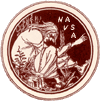Dickens Day 2014
Senate House, London (WC1)
Saturday October 11, 2014
Deadline: May 31, 2014
Saturday October 11, 2014
Deadline: May 31, 2014
“Dickens and
Conviviality”
Dickens’s works are famously convivial, depicting sociability in myriad forms: from the famously boozy Pickwick Papers, through the Crachits sentimental festive celebrations in A Christmas Carol, to the miserable family gatherings of Martin Chuzzlewit and Great Expectations, and the skewering of upper-class social pretentions and false conviviality in Bleak House, Little Dorrit and Our Mutual Friend. Dickens’s works were famous from the outset for their emphasis on humor, celebrations, family gatherings, theatrics, eating and drinking, and good cheer. Dickens was also himself famously convivial and sociable, accruing a wide circle of friends across the social spectrum and notorious for his love of parties, jamborees, practical jokes, theatrics, and other forms of high-spirited sociability. Yet Dickens was also a chronicler of the flipside of bonhomie, exploring loneliness, isolation, poverty and want, social aping and pretension, and the feelings of inadequacy, anxiety and exclusion that may fuel conviviality.
Dickens’s works are famously convivial, depicting sociability in myriad forms: from the famously boozy Pickwick Papers, through the Crachits sentimental festive celebrations in A Christmas Carol, to the miserable family gatherings of Martin Chuzzlewit and Great Expectations, and the skewering of upper-class social pretentions and false conviviality in Bleak House, Little Dorrit and Our Mutual Friend. Dickens’s works were famous from the outset for their emphasis on humor, celebrations, family gatherings, theatrics, eating and drinking, and good cheer. Dickens was also himself famously convivial and sociable, accruing a wide circle of friends across the social spectrum and notorious for his love of parties, jamborees, practical jokes, theatrics, and other forms of high-spirited sociability. Yet Dickens was also a chronicler of the flipside of bonhomie, exploring loneliness, isolation, poverty and want, social aping and pretension, and the feelings of inadequacy, anxiety and exclusion that may fuel conviviality.
How do conviviality, sociality, and humor operate in Dickens’s work, and how and why do such depictions continue to amuse and entertain? What critical, biographical and psychological frameworks can the committee apply to analyze Dickensian good feeling? These are some of the questions the day seeks to address.
The committee warmly invite proposals for 20-minute papers from scholars of all
backgrounds and career stages. We are always keen to feature new work from
postgrads, postdocs, early career teachers and researchers, and those working
outside the academy. Topics might include, but are by no means limited to, the following:
- Humor, laughter and good cheer
- Food and drink
- Christmas
- Picnics, outings, excursions, holidays, parties
- Class and representations of conviviality
- Dickens’s reputation – then and now – as a comic novelist
- Humor, satire and Dickens’s radical politics
- The adaptation of Dickens’s humor into other mediums – theatre, film, television
- Amateur theatrics
- Bodily expressions of the convivial: laughter, smiling, glowing and other non-verbal, physical cues and manifestations
- Biography – Dickens’s famous conviviality and many friendships
- Conviviality’s ‘others’: social anxiety and isolation, shyness, poverty and want
- False conviviality: masks, social climbing and pretension
- Religion and Victorian social and moral attitudes towards conviviality
- Dickens’s relationship with his community of readers
- Dickensian good feeling: how the work and life of Dickens encourage conviviality and good feeling amongst the academics, enthusiasts and readers of his work. The purpose, history and success of the Dickens Fellowship and similar organizations and groups that celebrate Dickens and his work through social events.




